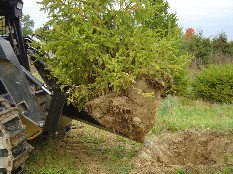 Sudden Oak Death (SOD) is becoming a major threat to a number of plants. First identified in 1995 in California, Sudden Oak Death has spread to several commercial nurseries across the U.S. The presence of this emerging tree disease in cold-weather climates suggests it has the potential to spread far and wide and cause serious economic damage. If you’ve not yet removed those infected trees, you may need to be prepared for devastating results.
Sudden Oak Death (SOD) is becoming a major threat to a number of plants. First identified in 1995 in California, Sudden Oak Death has spread to several commercial nurseries across the U.S. The presence of this emerging tree disease in cold-weather climates suggests it has the potential to spread far and wide and cause serious economic damage. If you’ve not yet removed those infected trees, you may need to be prepared for devastating results.
What Is Sudden Oak Death?
Sudden Oak Death is caused by a fungus called Phytophthora ramorum. It can kill a variety of trees, sometimes within weeks, and persists in the environment for extended periods. It can be transmitted by direct contact, insects, rainsplash, and rainwater.
How is Sudden Oak Death Identified?
Foliage infection presents as brown or black leaf spots, twig dieback, and black discoloration of shoot tips. The disease generally spreads from the stem tip to the base, but may spread upward in Viburnum. Trunk infection appears as bark cankers that leak a dark-red or black sap. Investigation of a canker will reveal red, necrotic areas of bark with surrounding black zone lines .
Potential Spread
There is evidence that a number of Eastern tree species are susceptible to SOD. Areas of the Appalachian range and Gulf Coast are at high risk of infection. Parts of the eastern U.S. are at moderate risk of infection . The disease has been found in nurseries in Texas, Florida, North Carolina, Georgia, Mississippi, Alabama, Virginia, and Maine.
Treatment
Management depends on preventing spread as there is no effective treatment. Plant debris can be infectious for long periods after removal, so it is recommended that infested material be burned. Infected material should not be removed from the site of infection .
Prevention
Because many plants can host Phytophthora ramorum, it is recommended that nurseries inspect all incoming cultivars. Nurseries can avoid economic damage by being aware that rhododendron, madrone, evergreen huckleberry, laurel, buckeye, redwood, fir, honeysuckle, manzanita, and some species of maple may carry SOD. A treatment protocol for nurseries is found at the APHIS site.
Phytophthora ramorum remains in spore form for long periods of time, so preventative phosphonate treatments are recommended if planting in a contaminated area. Plants that are resistant to Phytophthora ramorum should be used where possible. Examples of such plants include certain pines, yews, sycamore, chestnut, cherry, and some limited types of oak. More information can be found at APHIS or at the UK Forestry Commission.

